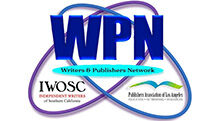 by Bobbie Christmas
by Bobbie Christmas
Q: I’ve heard conflicting information about attributions. Some places say that using “said” is the best way to attribute dialogue to characters in fiction or interviewees in nonfiction. Other sources say to avoid using “said.” What’s the scoop? Who’s right or wrong? What’s a writer to do?
A: Interestingly both views have merit. Attributing quotations keeps readers fully apprised of who says what. On the other hand, too much repetition of the same word leads to weak writing.
The issue is a creative one, not an issue or what’s right or wrong, so I have some creative suggestions.
It’s true that strong writing avoids overusing attributions, also called tags, when writing dialogue. Attributions include such words as said and asked, but also include stretches for other words, such as recalled, mumbled, repeated, cried, hissed, growled, remarked, replied, begged, added, answered, touted, expressed, explained, complained, grumbled, implored, shouted, countered, and retorted.
Strong writing, however, doesn’t stretch for new attributions, because they eventually stand out as a pattern too and are therefore best avoided. Agents, editors, and publishers call these alternate words—words used in an attempt to avoid “said” or “asked”—saidisms. If you must attribute a quotation, don’t be afraid of the standard “said” or “asked,” as long as these words are not overused to the point of repetition. Readers find standard words less intrusive than overblown replacements.
I’m about to tell you ways to avoid using “said” or any saidism entirely and still clearly show who speaks.
Attribution is rarely needed when only two characters speak, but only after the initial speakers are clearly defined. Conversation naturally then flows from one to the other, especially since in proper format, each speaker gets his or her own paragraph. Here’s an example:
Bryan said, “Michael, I’m tired of staying home every night.”
“What do you want to do, then?”
“Why don’t we go to that old hangout where we first met?”
“I think it closed.”
“Darn it. Okay, even a movie would be nice.”
Notice that early in the opening I used one attribution and the other person’s name, so readers know the conversation is between Bryan and Michael? I warn writers, though, not to use names in dialogue too often, because in real life we don’t often call others by their names except during arguments or in group settings, such as meetings. It would be unnatural, then, to write this way:
“Michael, I’m tired of staying home every night.”
“What do you want to do, then, Bryan?”
“Michael, why don’t we go to that old hangout where we first met?”
“I think it closed, Bryan.”
“Darn it, Michael. Okay, even a movie would be nice.”
Here’s my strongest suggestion for avoiding tags: Show who’s speaking through action. This trick gives the reader much more information through the character’s actions and reactions. When a new paragraph begins with a character doing an action, the reader knows that person is also the one talking in that paragraph. Make sure to use this action/reaction method of attribution early in the paragraph in each new scene.
Here are three potential scenes that begin with action to show who speaks:
John ran his tongue over his teeth. “I just came from the dental hygienist. Can you tell?”
Marsha cleared her throat. “I have something to tell you about the car.”
“The sherry is superb.” Ed dabbed his lips with the corner of a cocktail napkin.
Some writers use attribution plus action (or gerund), when only the action is needed. This practice adds words and sets up a pattern sometimes repeated throughout a manuscript. Example: “Yes,” John said, pushing back his chair. Better: “Yes.” John pushed back his chair.
Make sure to change up the location of the attribution, as well, to avoid patterns. For example, instead of the following scene:
Jack said, “Let’s go fishing.”
John said, “I’d rather slit my throat.”
Jack said, “That can be arranged.”
John responded, “Very funny. Can’t we see a movie instead?”
Consider a rewrite such as this one:
Jack said, “Let’s go fishing.”
John shook his head. “I’d rather slit my throat.”
“That can be arranged.” Jack smiled.
“Very funny.” Jack tilted his head. “Can’t we see a movie instead?”
One final point. People cannot smile, cough, laugh, or blink dialogue. I have to delete such things from many manuscripts that I edit. Here are some examples: Scott smiled, “I like your new hairdo.” Wrong! The correct usage would go like this: Scott smiled. “I like your new hairdo.” Did you see the period after the action word “smiled?” Good.
I hope this information helps you use new ways to attribute dialogue and write strong prose.
Bobbie Christmas, book editor, author of Write In Style: Use Your Computer to Improve Your Writing, and owner of Zebra Communications, will answer your questions, too. Send them to Bobbie@zebraeditor.com. Read more Ask the Book Doctor questions and answers at www.zebraeditor.com.
